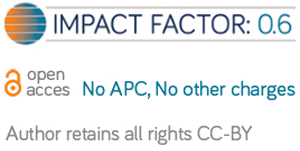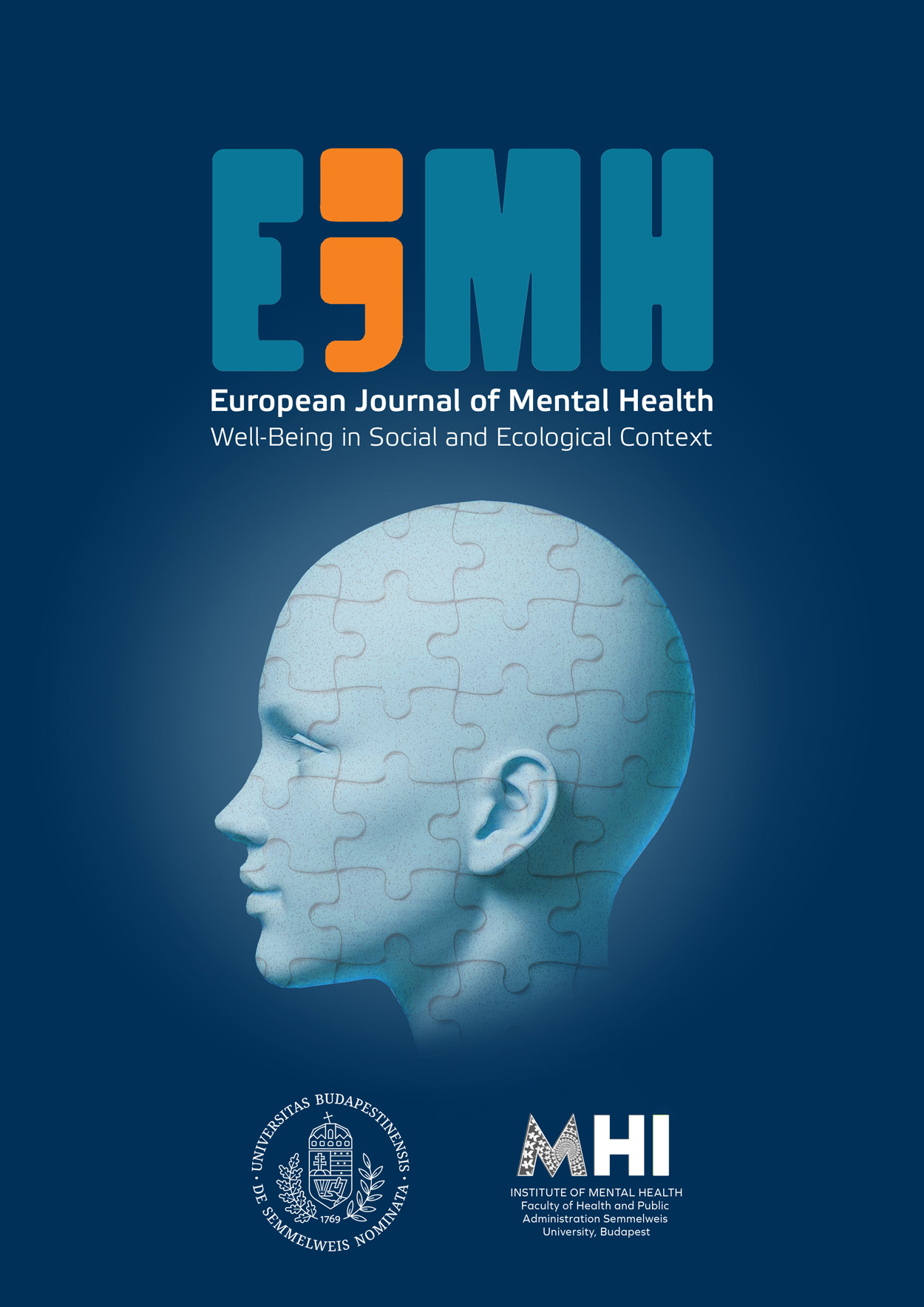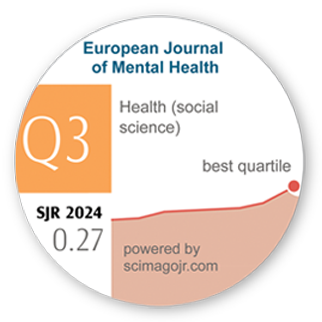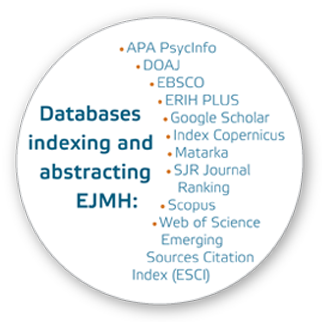How Do Poles Perceive Schizophrenia? Furnham and Chan’s Questionnaire in Poland
DOI:
https://doi.org/10.5708/EJMH/17.2022.1.2Keywords:
schizophrenia, Poland, mental illness, social representations, lay knowledgeAbstract
Introduction: Individuals with psychosis spectrum disorders may be negatively affected by exclusion and rejection. It is important to answer “why”? This article presents social representations of schizophrenia in Polish society.
Aims: The study’s aim was to examine the properties of the sixty-item questionnaire on attitudes, attribution and beliefs about schizophrenia in the Polish sample and to compare the results with the results obtained in the English-Chinese sample.
Methods: The study included 398 participants (aged 19–74); all were working persons. Furnham and Chan created the questionnaire, a tool containing 60 items describing general beliefs about schizophrenia, causal explanations in the etiology of schizophrenia, as well as beliefs about the role of hospitals and society in the treatment of schizophrenia. Factor analysis (PAF) was carried out separately for three parts of the tool.
Results: The structure of the questionnaire that was obtained on the Polish sample differs from that obtained on the English-Chinese sample. Some factors remain similar. Reliability analysis based on Cronbach’s Alpha values reached satisfactory levels in most of the factors revealed.
Conclusions: The questionnaire is a reliable tool for examining social representations of schizophrenia. The Polish sample does not show punitive inclinations, does not attribute negative traits to schizophrenics, and does not agree to creating social distance.
References
Alexander, L. A., & Link, B. G. (2003). The impact of contact on stigmatizing attitudes toward people with mental illness. Journal of Mental Health, 12(3), 271–289.
https://doi.org/10.1080/0963823031000118267
Badyńska, S., & Brzezicka, A. (2007). Statystyczny drogowskaz. Praktyczny poradnik analizy danych w naukach społecznych na przykładach z psychologii (1st ed.) [Statistical Signpost: A practical guide to data analysis in social sciences based on examples from psychology]. Academica Wydawnictwo SWPS.
Borowiec, A. A., & Lignowska, I. (2015). How do Poles perceive health? The social representation of health and its importance for the social order. Polish Sociological Review, 192(4), 511–528.
Furnham, A., & Bower, P. (1992). A comparison of academic and lay theories of schizophrenia. British Journal of Psychiatry, 161(2), 201–210.
https://doi.org/10.1192/bjp.161.2.201
Furnham, A., & Chan, E. (2004). Lay theories of schizophrenia. A cross-cultural comparison of British and Hong Kong Chinese attitudes, attributions and beliefs. Social Psychiatry and Psychiatric Epidemiology, 39, 543–552.
https:/doi.org/10.1007/s00127-004-0787-8
Furnham, A., & Cheng, H. (2000). Lay Theories of Happiness. Journal of Happiness Studies, 1, 227–246.
https://doi.org/10.1023/A:1010027611587
GUS (2018). (Central Statistical Office).
https://stat.gov.pl/files/gfx/portalinformacyjny/pl/defaultaktualnosci/5500/8/1/1/zycie_religijne_w_polsce_wyniki_badania_spojnosci_spolecznej_2018.pdf
Gzocha, P., & Kurpas, D. (2011). Chorzy psychicznie w odbiorze społecznym – wyniki badania pilotażowego [Mentally ill people as perceived by society – Results of a pilot study]. Family Medicine & Primary Care Review, 13(2), 147–150.
Hong, Y., Levy, S. R., & Chiu., C. (2001). The contribution of lay theories approach to the study of groups. Personality and Social Psychology Review, 5(2), 98–106.
https://doi.org/10.1207/S15327957PSPR0502_1
Lincoln, S. H., Johnson, T., Winters, A., & Laquidera, J. (2021). Social exclusion and rejection across the psychosis spectrum: A systematic review of empirical research. Schizophrenia Research, 228, 43–50.
https://doi.org/10.1016/j.schres.2020.11.056
Link, B. G., & Phelan, J. C. (2001). Conceptualizing Stigma. Annual Review of Sociology, 27, 363–385.
https://doi.org/10.1146/annurev.soc.27.1.363
Link, B. G., Struening, E. L., Neese-Todd, S., Asmussen, S., & Phelan, J. C. (2001). Stigma as a barrier to recovery: the consequences of stigma for the self-esteem of people with mental illnesses. Psychiatric Services, 52(12), 1621–1626.
https://doi.org/10.1176/appi.ps.52.12.1621
Mroczek, B., Wróblewska, I., Kędzierska, A., & Kurpas, D. (2014). Postawy dorosłych Polaków wobec osób chorych psychicznie. Family Medicine & Primary Care Review, 16(3), 263–265.
Reavley, N. J., Jorm, A. F., & Morgan, A. J. (2016). Beliefs about the dangerousness of people with mental health problems: The role of media reports and personal exposure to threat or harm. Social Psychiatry and Psychiatric Epidemiology, 51, 1257–1264.
https:/doi.org/10.1007/s00127-016-1215-6
Tavakol, M., & Dennick, R. (2011). Making sense of Cronbach`s alpha. International Journal of Medical Education, 2, 53–55. https:/https://dx.doi.org/10.5116%2Fijme.4dfb.8dfd" href="https://dx.doi.org/10.5116%2Fijme.4dfb.8dfd">doi.org/10.5116/ijme.4dfb.8dfd
Vogel, M. (2014). Mental illness and criminal behaviour. Sociology Compass 8(4), 337–346.
Wciórka, B., & Wciórka, J. (2002). Polacy o schizofrenii i chorych na schizofrenię (1). Społeczne rozumienie słowa “schizofrenia”. Komunikat z badań [Polish people about schizophrenia and people suffering from schizophrenia (1). Social understanding of the word “schizophrenia”. Research communication].
https://cbos.pl/SPISKOM.POL/2002/K_009_02.PDF
World Health Organization Regional Office for Europe. (2018). Fact sheets on sustainable development goals: health targets. Mental Health. http://www.euro.who.int/__data/assets/pdf_file/0017/348011/Fact-sheet-SDG-Mental-health-UPDATE-02-05-2018.pdf






